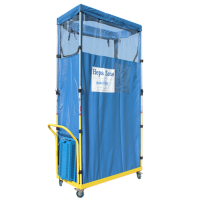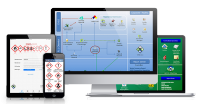Services
Healthcare Settings Accreditation Consultancy Services
Environmental Infection Control and Safety Consultancy Services
Emergency Response Consultancy Service
Corporate Social Responsibility and Sustainability Services
Environmental Professional Fellowship Program
BIM Services
Food Safety/HACCP Consulting Services
Our Partners
 |
 |
 |
 |

One-day Workshop
The velocity of change brought about by the power of the customer, technology enablers, cost pressures, and globalization requires businesses to construct agile, flexible and fast-paced distribution and logistics functions. The distribution channel determines how products and services make their way from the manufacturer to the customer. Logistics facilitates this movement of materials and marketplace information through the distribution pipeline.
This one-day workshop will focus on Distribution and Logistics management.
Distribution and Logistics
The distribution channel determines how products and services make their way from the manufacturer to the customer. Logistics facilitates the movement of materials and marketplace information through the distribution pipeline. For the most part, logistics is concerned with the functions of warehousing and transportation and is charged with the responsibility of ensuring goods and services are available at the proper place and in the proper quantities. Topics discussed include:
- Define distribution and logistics management
- Distribution channels and intermediaries
- Roles performed by the distribution function
- Components of logistics management and operations
- Reverse logistics
- Role of the logistics function in supply chain management
Distribution Requirements Planning
Unlike replenishment methods that use statistical calculations to determine when orders should be released and what the order quantities should be, DRP determines inventory requirements by time-phasing supply to meet demand for each product at each warehouse in the distribution channel. Topics discussed include:
- Distribution channel dependencies
- Push and pull functions
- Replenishment methods or DRP?
- DRP planning grid
- Bill of distribution
Source: Principles of Distribution & Logistics, sessions 2 & 5
Potential Audience
This workshop may be of interest to: material planners, supervisors, team leads, shipping and receiving, operations management.
Focus Workshop - Forecasting & Demand Management
- One-day Workshop
Much of the success of enterprise planning and decision making depends on the formulation of accurate forecasts. Forecasting permits firms to establish performance measurements for customer service, plan the level of total inventory investment, choose between alternative operating strategies, and develop assumptions about the stability of the business to respond to the future needs of the marketplace.
This one-day workshop will focus on forecasting and demand management.
Forecasting
Development and maintaining accurate forecasts is critical to effective decision making at all levels of the organization. Effective forecasting will enable the firm’s managers to accurately project expected demand on the business’s resources. Topics discussed include:
- Forecasting functions
- Three levels of forecast
- Defining demand
- Universal principles of forecast management
- Forecasting process
- Benefits of forecast accuracy
- Qualitative, quantitative and causal forecasting techniques
- Why forecasts fail
Demand Management
This continues the discussion on forecasting by focusing on understanding, determining and working with forecast error. Included is a deeper investigation into customer and demand management – centering on a review of customer relationship management (CRM) and how it assists in the development of the overall demand plan that will be transmitted to sales and operations planning (S&OP) and master production scheduling (MPS). Topics discussed include:
- Defining demand management
- Components of demand management
- Demand management in the MPC system
- Forecast performance
- Calculating and measuring forecast error
- Mean and standard deviation of forecast error
- Customer relationship management (CRM)
- Customer service management
- Demand management technology tools
- Demand management performance
Source: Principles of Operations Planning, sessions 3 & 4
Potential Audience
This workshop may be of interest to: material planners, production planners, sales and marketing, customer service, buyers, procurement, middle management.

One-day Workshop
The capacity assets of a company are, for the most part, set and difficult to change in the short term. Capacity management is decidedly strategic and essential to the firm’s survival. Too much capacity underutilizes resources and drives costs up. Too little capacity limits the plant’s ability to successfully execute the priority plan.
Capacity planning and management provide detailed insight into the basic production databases such as bills of material, routings, work centers, and work center loading, essential to a firm understanding of production activity control (PAC) – a set of activities that converts and manages the release, management, and completion of production orders.
This one-day workshop will focus on Capacity Planning & Management and Production Activity Control.
Capacity Planning and Management
The goal of material requirements planning (MRP) is to arrive at a statement of the plant’s priority plan. While this is important, it is, however, only half of the job performed by the production planner. The other half of the task is planning and controlling the plant’s capacities. The goal of the plan is to determine where, how much, and when the plant’s capacities are required to support the materials plan. Topics discussed include:
- Defining capacity, capacity management and capacity requirements planning (CRP)
- Understanding the different levels of capacity planning in the manufacturing planning and control (MPC) system
- Detailing the objectives of capacity management
- Calculating capacity, demand loading, schedule and managing capacity through the load-versus-capacity report
- Managing capacity shortages and excesses
Production Activity Control (PAC)
Managing the PAC process is a complex task. The difficulty resides in ensuring the timely and complete execution of the schedule of production orders in an inherently dynamic environment. Topics discussed include:
- Concise definition of PAC
- Outline the major activities of a PAC system
- Prerequisites to effective PAC management
- Implementation and execution of the various activities constituting the PAC management flow
- How effective PAC management enables the communication and cooperation of the PAC system outputs with other key business departments such as marketing and sales, engineering, inventory management and finance.
Source: Principles of Manufacturing Management, sessions 7 & 8
Potential Audience
This workshop may be of interest to: master schedulers, material planners, production planners, production coordinators, production supervisors, team leads, operations management.
About Green Health Canada Inc.
Green Health Canada Inc. is a Canadian company dedicated to directly assist governments and communities in their efforts to maintain sustainable systems, secure optimal public health, and ensure an acceptable quality of life remains available to all people..... read more
Services
- Healthcare Settings Accreditation Consultancy Services
- Environmental Infection Control and Safety Consultancy Services
- Emergency Response Consultancy Service
- Corporate Social Responsibility and Sustainability Services
- Environmental Professional Fellowship Program
- BIM Services
- Food Safety/HACCP Consulting
© 2025 Design & Developed by BDSOURCE














